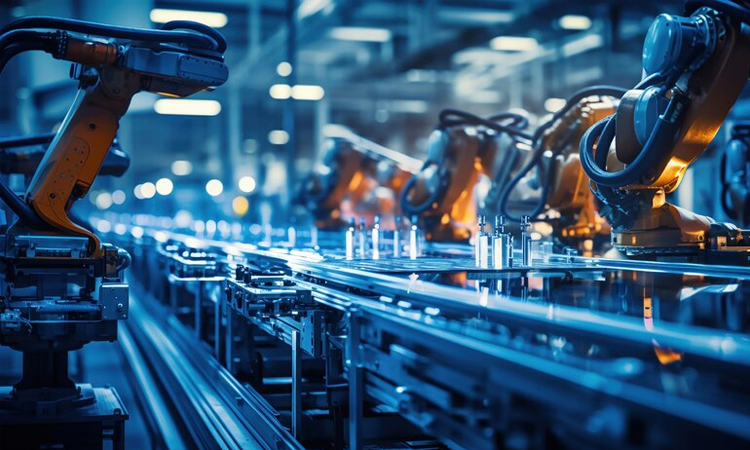The machine peripherals industry, which includes essential components such as tooling systems, automation equipment, sensors, and software that support machines in manufacturing environments, is experiencing a rapid evolution. As industries embrace digitalization, smart manufacturing, and automation, the peripherals sector is poised to undergo significant changes. Here are the key future trends shaping the machine peripherals industry.
Integration with Industry 4.0
The rise of Industry 4.0 has driven greater connectivity between machines, sensors, software, and workers on the shop floor. Machine peripherals are increasingly designed to be compatible with the cyber-physical systems that form the backbone of smart manufacturing. Advanced sensors, embedded systems, and IoT technology allow peripherals to seamlessly communicate with the machines they support, enabling real-time monitoring, predictive maintenance, and enhanced automation. This interconnectivity ensures greater operational efficiency, faster decision-making, and improved product quality.
Future machine peripherals will be increasingly integrated with cloud-based platforms, allowing for enhanced data analytics and remote monitoring. The ability to gather data from a wide array of connected peripherals provides manufacturers with valuable insights into machine performance, efficiency, and potential bottlenecks, driving continuous improvement in operations.
Automation and Robotics Integration
Automation continues to be one of the most significant trends in manufacturing, and machine peripherals are evolving to meet the growing demand for smarter, more flexible systems. Robotics integration is a critical aspect of this trend. Peripherals such as robotic arms, end-effectors, grippers, and conveyors are becoming smarter, more adaptive, and capable of collaborating with humans on the shop floor.
Collaborative robots, or cobots, are particularly important as they work alongside human operators without the need for safety barriers, improving flexibility and safety. Machine peripherals will increasingly be designed to integrate seamlessly with cobots, enhancing their functionality and extending their applications across various industries. This integration will help manufacturers automate repetitive, dangerous, or ergonomic tasks while improving efficiency and safety.
Artificial Intelligence and Machine Learning
Artificial Intelligence (AI) and Machine Learning (ML) are revolutionizing machine peripherals. By incorporating AI algorithms into peripheral devices, manufacturers can enhance their automation systems with predictive capabilities and advanced process optimization. For instance, AI-powered vision systems, used in inspection and quality control, can identify defects with higher accuracy and in real time. These systems can also adapt to new conditions without the need for reprogramming, making them highly versatile.
AI and ML are also being used to improve the capabilities of peripheral devices like CNC tool changers, feeders, and conveyors by predicting maintenance needs and adjusting parameters to optimize performance. As these technologies continue to develop, machine peripherals will become more autonomous and efficient, contributing to smarter manufacturing environments.
Increased Focus on Energy Efficiency
Energy efficiency is a growing concern in manufacturing as industries seek to reduce operational costs and meet sustainability goals. In response, machine peripherals are being developed with energy-saving features. For example, servo motors, variable frequency drives, and energy-efficient cooling systems are becoming standard in new peripheral equipment.
Energy-efficient peripherals reduce power consumption, contributing to lower operational costs and reduced environmental impact. Manufacturers are increasingly opting for these solutions to align with sustainability initiatives and government regulations that promote energy conservation. In the future, expect to see even more energy-efficient peripherals as the demand for green manufacturing solutions increases.
Enhanced Safety Features
As automation and robotics are increasingly adopted, ensuring the safety of operators and machines becomes even more crucial. Machine peripherals are evolving to include advanced safety features, such as force sensors, collision detection, and real-time monitoring systems. These technologies enable machines to detect anomalies and respond accordingly, minimizing the risk of accidents.
Additionally, the integration of safety standards such as ISO 10218 and ISO/TS 15066 will continue to drive the design and development of machine peripherals, particularly in environments with human-robot collaboration. Safety is becoming an integral aspect of peripheral development, ensuring that automation can be implemented without compromising worker protection.
Miniaturization and Customization
Miniaturization of machine peripherals is another trend that will continue in the future. As demand grows for smaller, more flexible systems that can work in tight spaces, manufacturers are designing compact, efficient peripheral devices. These smaller peripherals are ideal for highly automated production lines, where space constraints are a factor.
Alongside miniaturization, the customization of machine peripherals is becoming more common. Manufacturers now seek peripherals that can be tailored to their specific needs, such as customized tooling, bespoke robotics, and personalized automation systems. This shift towards modularity and customization allows manufacturers to optimize their operations and gain a competitive edge.
The machine peripherals industry is at the forefront of technological transformation, driven by automation, AI, energy efficiency, and greater interconnectivity. As manufacturers continue to embrace Industry 4.0, machine peripherals will become smarter, more autonomous, and more energy-efficient. The growing demand for flexibility, customization, and safety will shape the development of new peripheral solutions, enabling industries to optimize production, enhance productivity, and reduce costs. As these trends evolve, the machine peripherals sector will continue to be a critical enabler of the future of manufacturing.



